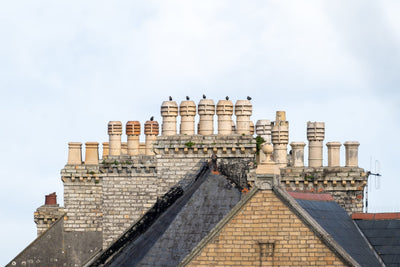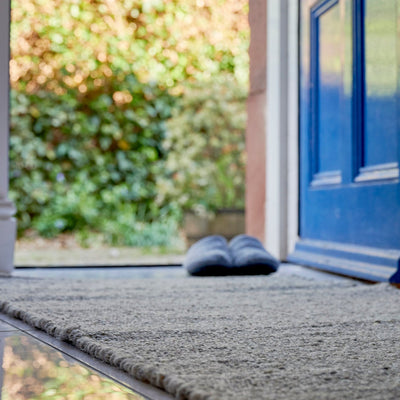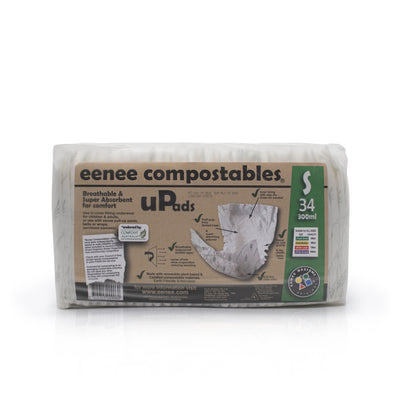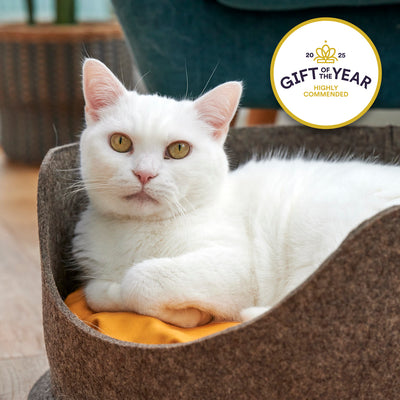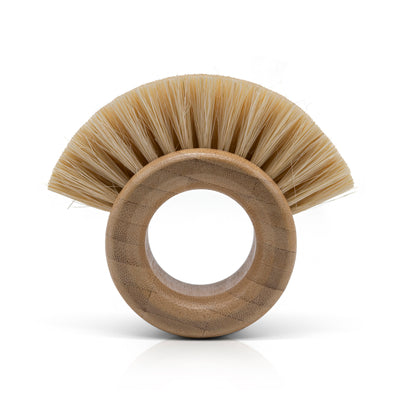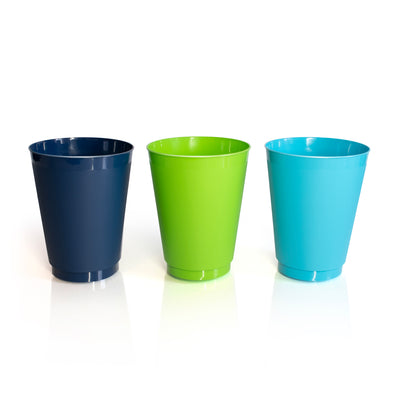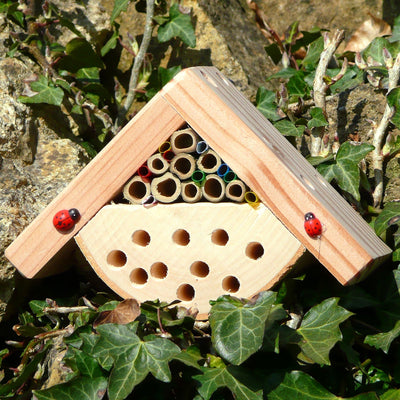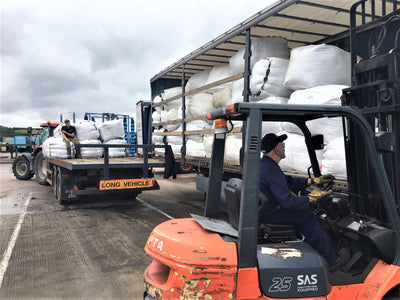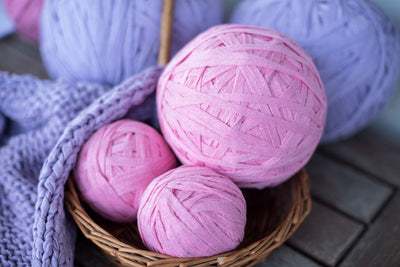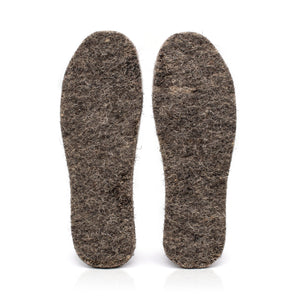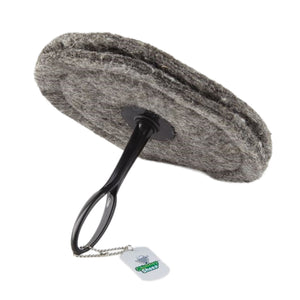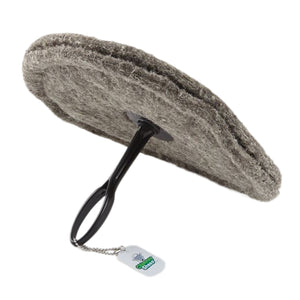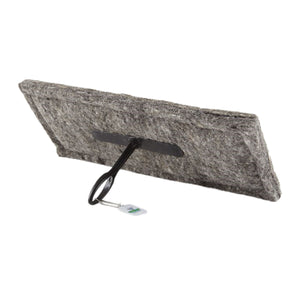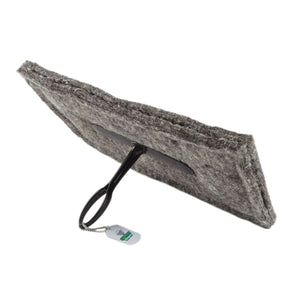Herdwick sheep are virtually wild. They roam the fells (Cumbrian for “mountain”) all year round, popping down to get shorn once a year. This is an opportunity for the farmer to check the sheep’s health as they can look chubby and well with all the wool on but once “clipped” the shepherd can see properly whether they’re in peak condition or not.
The wool is stuffed into bags that we provide. We buy direct from the farmers so we can guarantee a fair rate for the wool. We take all types of wool so long as it is Herdwick – if it goes to the auction every fleece is graded which adds to the cost which takes away from the farmer’s profit. Once we’ve collected it all up, it goes to Yorkshire to get washed and baled, then shipped to Austria where it is made into wool felt according to our specification. It is moth-proofed during this process. This is a chemical-free moth proofing treatment that is patent protected and only available in the one place. They invented it and they deserve the credit for it. We’re often asked if we can figure out how it’s done and do it here. No! It’s not as simple as it looks, it takes skill and know-how and I wouldn’t want anyone to steal my ideas so why should we steal theirs? No! So that’s why it has to go to Austria.
Then it comes back as lovely felt. One type we use for our Chimney Sheep®, and this type we have made specially as a moth proof pure wool underlay. It will last for decades. It will help to draught-proof your floorboards and will give a lovely bounce with every step.
What is so special about pure wool underlay?
Wool is very durable, and is selected for pubs, hotels, cruise ships and the like because it can cope with more heavy traffic than synthetic carpets and underlay.
Wool is sustainable – it is grown naturally by sheep which have to be shorn for welfare reasons. Sadly, wool is virtually a waste product these days. It’s the processing that makes it so expensive.
Wool also has other remarkable properties. It’s hygroscopic, meaning it can absorb a lot of moisture without feeling damp. When the air is dry, it will wick the moisture away. This way it helps to regulate the moisture in your home, helping to regulate the atmosphere. Even more remarkable, I think, is wool’s ability to absorb high volatile compounds (VOCs). These are in everyday household items like varnish on your furniture, paint, nail varnish and nail varnish remover, some cleaning products…. all of these enter the home environment and can cause health problems. The VOCs bind with the wool fibres and are locked in permanently.
Herdwick sheep are virtually wild. They roam the fells (Cumbrian for “mountain”) all year round, popping down to get shorn once a year. This is an opportunity for the farmer to check the sheep’s health as they can look chubby and well with all the wool on but once “clipped” the shepherd can see properly whether they’re in peak condition or not.
The wool is stuffed into bags that we provide. We buy direct from the farmers so we can guarantee a fair rate for the wool. We take all types of wool so long as it is Herdwick – if it goes to the auction every fleece is graded which adds to the cost which takes away from the farmer’s profit. Once we’ve collected it all up, it goes to Yorkshire to get washed and baled, then shipped to Austria where it is made into wool felt according to our specification. It is moth-proofed during this process. This is a chemical-free moth proofing treatment that is patent protected and only available in the one place. They invented it and they deserve the credit for it. We’re often asked if we can figure out how it’s done and do it here. No! It’s not as simple as it looks, it takes skill and know-how and I wouldn’t want anyone to steal my ideas so why should we steal theirs? No! So that’s why it has to go to Austria.
Then it comes back as lovely felt. One type we use for our Chimney Sheep®, and this type we have made specially as a moth proof pure wool underlay. It will last for decades. It will help to draught-proof your floorboards and will give a lovely bounce with every step.
What is so special about pure wool underlay?
Wool is very durable, and is selected for pubs, hotels, cruise ships and the like because it can cope with more heavy traffic than synthetic carpets and underlay.
Wool is sustainable – it is grown naturally by sheep which have to be shorn for welfare reasons. Sadly, wool is virtually a waste product these days. It’s the processing that makes it so expensive.
Wool also has other remarkable properties. It’s hygroscopic, meaning it can absorb a lot of moisture without feeling damp. When the air is dry, it will wick the moisture away. This way it helps to regulate the moisture in your home, helping to regulate the atmosphere. Even more remarkable, I think, is wool’s ability to absorb high volatile compounds (VOCs). These are in everyday household items like varnish on your furniture, paint, nail varnish and nail varnish remover, some cleaning products…. all of these enter the home environment and can cause health problems. The VOCs bind with the wool fibres and are locked in permanently.







